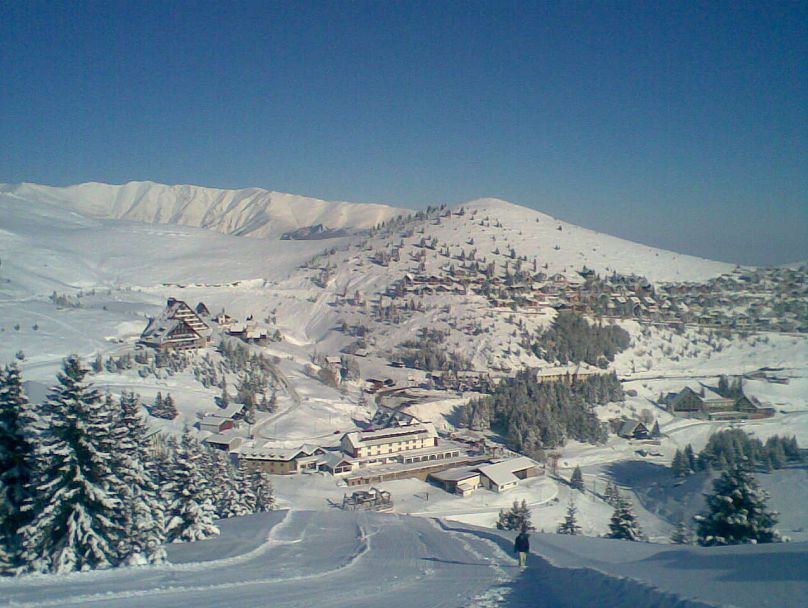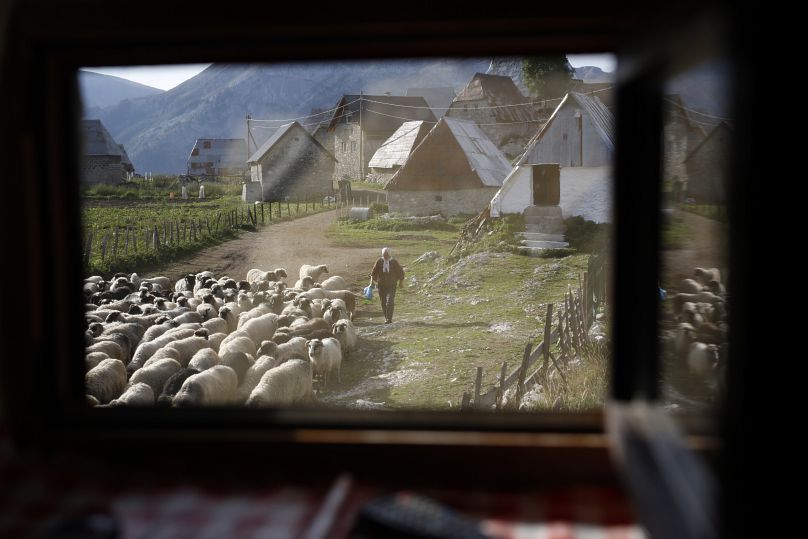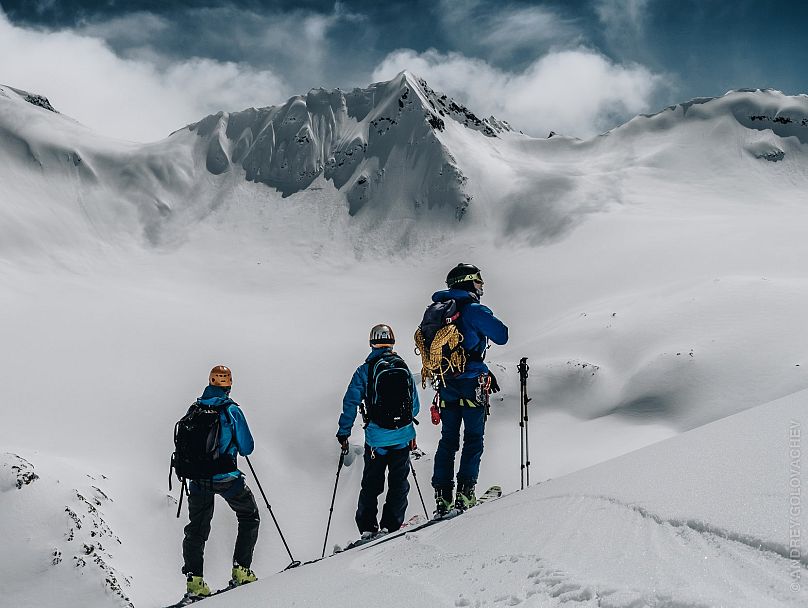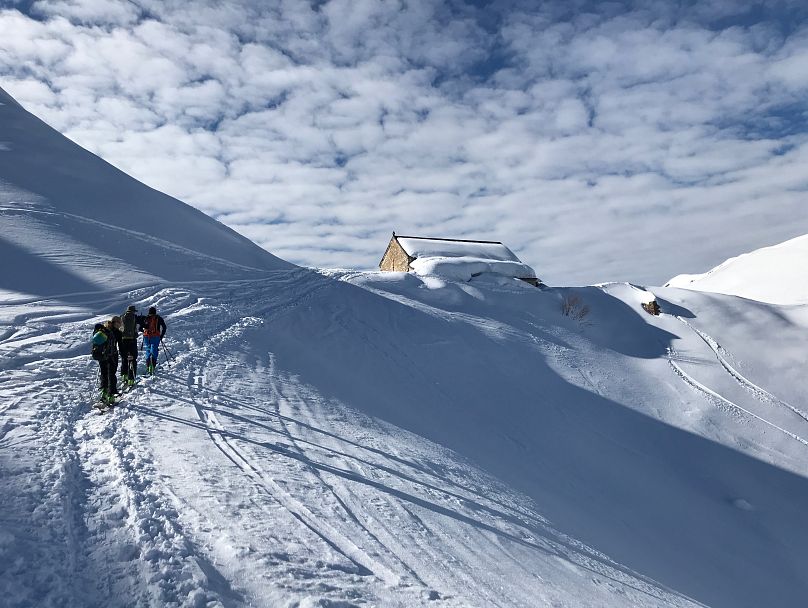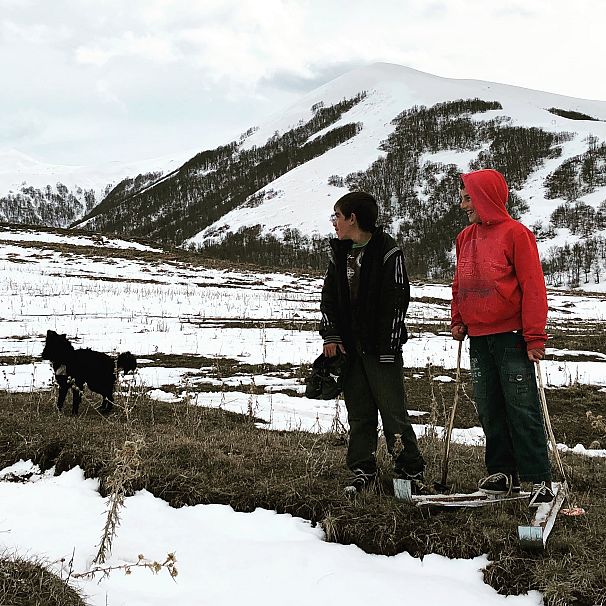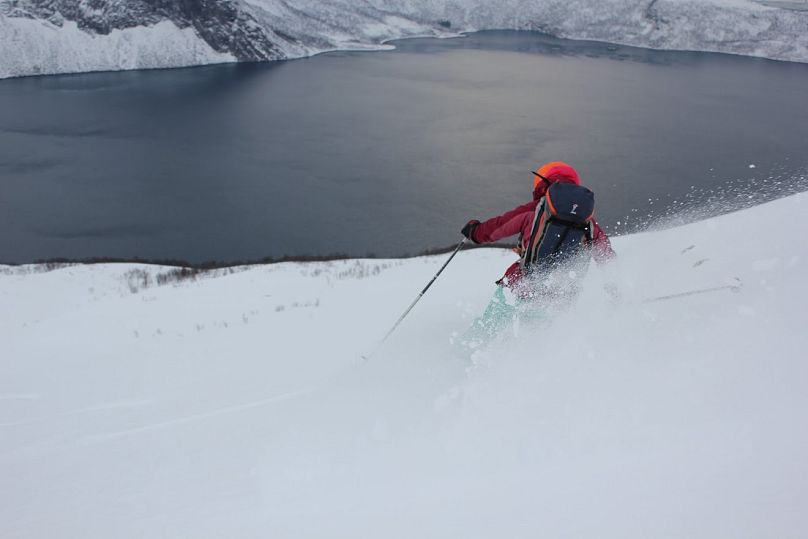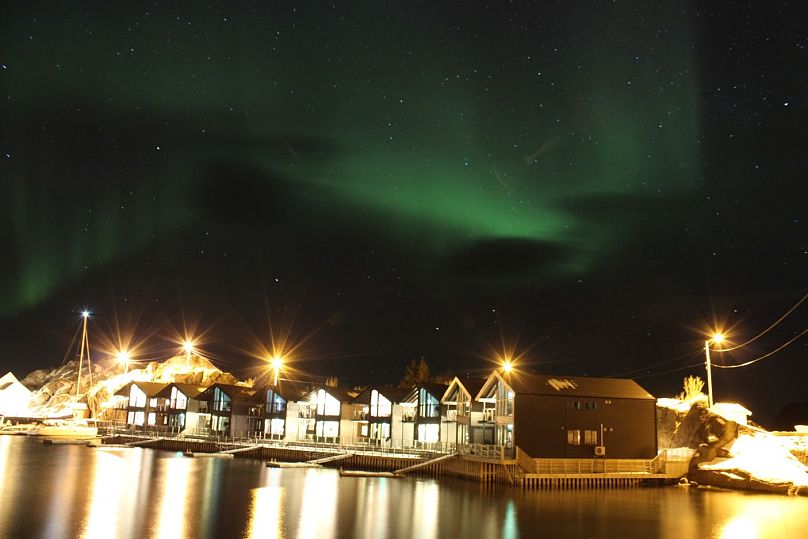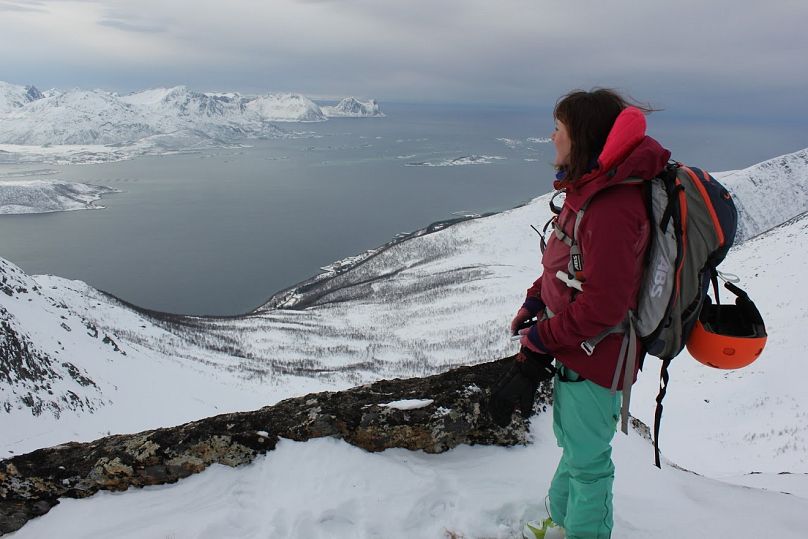From Albania to Poland, Europe has an abundance of wild and remote ski destinations to explore.
The Alps tend to tower to mind when you picture skiing in Europe, cutting across France, Switzerland, Austria and Italy.
But the continent has plenty of alternative destinations that offer unique landscapes and cultures - and some of the best powder in the world.
Some locations are lift accessible. For others, you may need to hike or take a snowcast to get you up the mountain.
For some of these remote places, you may even need to ski tour (where instead of using ski lifts, you go uphill using 'skins', a piece of fabric attached to the base of skis to prevent them from sliding back, before skiing downhill with skins removed).
First compiled in 2021, here is our pick of Europe’s most adventurous skiing locations.
13. Skiing in the Balkans
Much like the Alps, skiing in the Balkan mountains has a long history and tradition. The lesser-known mountains of Montenegro, Kosovo, Albania and Northern Macedonia include some of the highest peaks south of the Alps and are one of the continent’s most unspoiled wilderness.
The best thing about skiing in the Balkans, says John Eames, from The Off-piste & Telemark Ski Company, which offers ski trips to the region, is "the fun and the adventure of it all."
You will find "small, very friendly and always interesting ski areas dotted about these culturally-rich mountains. For fresh tracks off-piste and off-the-beaten-track touring these areas are unsurpassed … and there is so much to go at!"
But be prepared, says Eames: "Expect and embrace the wacky! Chairlifts and ski tows do work - most of the time - local food and wine are different but excellent, accommodation is varied but of excellent value and with great hospitality and friendliness."
"Don’t expect the well-oiled ‘ski resort machine’ that you might be used to in the Alps; with a bit of patience and persistence, you will come back full of stories and memories of some great skiing."
12. The Accursed Mountains
Prokletije or the ‘Accursed Mountains,' a range on the western Balkan peninsula, are said to offer some of the best skiing in Europe. But with no lift access, Montenegro's mountainous border with northern Albania (also known as the Albanian alps or Montenegrin Alps) receives few visitors.
According to local folklore, Prokletije was created by the devil when he was unleashed from hell for a single day of mischief. Its steep rocky faces and huge glaciers are said to be reminiscent of the Italian Dolomites and virtually impenetrable during the summer with only a series of high passes linking a small number of farmsteads in the valleys.
Here you feel far, far away from 21st-century Europe.
As the highest section of the entire Dinaric Alps, which zig-zag across the western Balkan peninsula, the ‘Accursed Mountains' offer steep skiing lines from peaks like Maja e Rosit or Maja Jezerca with breathtaking views of northern Albania, Kosovo and Montenegro’s north-east.
The best spots are around the Valbona and Thethi valleys. Here you can stay with host families or in one of the winter guesthouses. There are no apres-ski options, but you warm up by trying the homemade rakia - a traditional plum liquor.
11. Montenegro's wilderness of Kolasin and Durmitor
Also in the Dinaric Alps, over 90 per cent of Montenegro is mountainous terrain and the ranges of Sinjajevina, Durmitor and Bjelasica are ideal for “off the beaten track” ski adventures.
The Sinjajevina Mountain range stretches for 40 kilometres between the towns of Zabljak and Kolasin. The ski resort of Kolasin 1450 itself has some good tree skiing and ‘slackcountry’ ("easy-to-reach off-piste areas just beyond the fences and ropes of a resort's boundaries.)
Short hikes from the resort also give access to some couloirs from the Bjelasica ridge into the Jelovica valley.
About one-and-a-half hours away, the ski resort of Zabjlak - renowned for its apres-ski - allows access to the Durmitor mountains and the summit Savin Kuk (2322m) from where you can enjoy panoramic views across Montenegro's principal mountain range. The descent back into the ski area is about 900m vertical and can be repeated a few times.
A five-minute drive from the village of Zabjlak is the start of a long ascent to one of Durmitor’s highest summits, Sljeme (2,455m) From its ridge is Montenegro’s longest ski run with over 1000m vertical drop.
10. The Sharr Mountains
The Sharr Mountains lie on the border between Albania and Northern Macedonia and end along the southern border of Kosovo. They are slightly more rounded than the Accursed Mountains, and have many peaks over 2500 metres tall, which offer steep north faces and very stable snow conditions.
In Kosovo, the ski resorts of Brezovica, the home of a snowcat free-ride, and nearby Prevalla allow easy access to the range.
The highest peak of the 80km long Sharr Mountains is Tito’s peak (2747m) in Northern Macedonia. Located very close to the border with Kosovo, it's named after Josip Broz Tito, the one-time president of Yugoslavia.
Several peaks including Tito can be accessed from the ski-resort Popova Sapka (Priest’s Hat) which is less than two hours west of Skopje.
With 20km of slopes, it has a limited number of ski tows and chairlifts. The one to take is the double chair lift to the summit of the resort. This lift opens up to the expansive backcountry ski terrain of easy alpine bowls, steep chutes, and tree skiing.
Visiting Popova Sapka is also said to be a cultural and culinary experience; trying the Vranec wine, known also as black wine in Macedonia, is a must.
9. Bosnia and Herzegovina
Also part of the Dinaric Alps, Bjelašnica in Sarajevo hosted the 1984 Winter Olympics back when Bosnia and Herzegovina was part of Yugoslavia.
The skiing is mostly between 1200-2300m offering 800m to 1000m of ascent and a similar amount of descent.
Half an hour away from the ski centre at Bijelasnica is the Vrela mountain hut at an altitude of 1210m. From here you can access many peaks between 1300m- 1800m (such as Veliko Brdo Peak, Drstva Jelenaca, Puzim, Mokre Stijene and Baturak.
Six kilometres from the Vrela mountain hut is Umoljani village (1330m).
A two-hour climb from here leads to Obalj peak (1900m) from where you can ski down to Lukomir (1500m) the highest ethnic village in Bosnia.
8. The Caucasus
Where Europe ends and Asia begins lies the untapped ski terrain of the Caucasus Mountains. The home of Europe's highest peak, Mount Elbrus stands at 800m higher than Mont Blanc.
The whole range is bigger and feels more rugged and dramatic than the Alps and you can expect to ascend 1000-1500m vertical metres and more.
7. Elbrus and beyond
IFMGA trainee guide and founder of Primalscapes, Andrey Golovachev, says while the lifts are relatively new at the resort on the flanks Elbrus, the number of pistes is surprisingly small and the snow is "not as dry and fluffy as in Siberia."
"Apart from Elbrus itself," says Golovachev, there are a number of rickety chairlifts servicing off-piste areas of Mt. Cheget circa 3,700m right across the valley with its huge ungroomed love/hate moguls and iconic steep and long couloirs on the Northern face."
From here you see 'mighty Elbrus' right across the valley.
"There is also plenty of accommodation and some apres-ski options for both Elbrus and Cheget in Terskol and Azau villages."
"Another opportunity to stay off the grid are Adyr-Su and Adyl-Su valleys where one can ski tour at the foothills of the Greater Caucasus while staying at basic cabins. Plenty of ski touring routes."
6. Skiing in Georgia
Skiing in Georgia is both remote and unique. The country has "become more attractive for people interested in extreme winter holidays, who want to ski off-piste, go heli-skiing or ski touring," says Shota Komakhidze from Climbing Georgia.
There are four resorts in the east and west of the country, of which Gudauri near the southwestern Russian Republic of North Ossetia–Alania, is the largest, set at a high altitude of 2196m.
Gudauri itself has slopes going up to 3279m with 14 lifts and over 70km of runs. From the resort, you can access peaks like Lomisa, Dedaena, Narovani, Meliona, and Bidara which offer 900-1200 vertical metres on fine powder and safe slopes.
A ski tour to the 9th century Lomisa Monastery offers both great backcountry skiing and a cultural experience. There are many legends about the monastery that stands at 2200m.
One tells the story of Saint George who saved a Georgian hostage captured in the 13th century when the Khwarazmid army driven from his realm by the Mongol Empire, tried to recapture lost territories, including Georgia. As a sign of appreciation, the hostage saved one of the chains in the Lomisa Church.
The huge chain is still found there and you can put it around your neck and make a wish, before skiing back down to Gudauri.
"Another very beautiful and interesting region is Svaneti, in the central part of the Caucasian mountains, of northwestern Georgia," says Komakhidze.
The home of the Tetnuldi ski resort and four of the ten highest peaks in the Caucasus such as Mount Shkhara 5,193m, Mount Tetnuldi 4,858 m and Mount Jangha 5,051m.
The culturally-rich region its also as well known for its 12th-century fortified towers which were used both as dwellings and as defence posts against the invaders, and its stone houses that characterise its villages, including Ushguli, the highest village in Europe (2200m).
Georgia is, of course, renowned for its food with influences from Greece and Turkey as well as Iran and their wine-making skills which go back 8,000 years.
"Skiing the central Caucasian slopes give you the opportunity to see different villages and landscapes every day and will leave you with unforgettable memories," says Komakhidze.
5. Skiing in Armenia
One minute you're exploring first-century Graeco-Roman temples and other antiquities of one of the earliest Christian civilisations on earth, then you’ll be passing former Soviet factories, ancient trucks and Ladas.
"The food, kiln bakeries, mad wind and sunny skies, abandoned war shelters, pink bricked buildings, churches in rock faces and a couple of kids with trainers nailed onto 'skis'. Those are my memories of Armenia, far away from war-torn zones... a totally different ski experience and world," says Caroline Mulligan, who recently skied in Armenia with Climbing Georgia.
Skiing in Armenia with its landscape of extinct volcanoes, endless canyons and many 3000-4000 metre peaks and the backdrop of Mount Ararat (where Noah landed the Ark!) is a land of contrast and as much about the culture and history as it is the snow.
There are no real glaciers in the Little Caucasus mountains of Armenia, but they get loads of snow in winter making it the ideal place for easy-going ski touring staring in various towns and villages.
From the spa resort town of Dilijan you can access Mt Tezhler (3101m) or from the town of Byurakan, a 40-50 minutes drive from the capital Yerevan, you can access Mount Aragats, an isolated four-peaked volcano massif.
From the small village of Sevaberd you can cross the volcanic plateau east of the capital, whose highest point is Volcan Azdhaak, 3609m.
4. Norway, Senja Island: Summit-to-sea skiing
If you want to hunt for the Northern Lights, go fishing or take a sauna and jump into the freezing ocean then Senja Island is for you.
Norway's second-largest island location deep into the Arctic Circle is full of secluded untracked peaks. perfect for powder skiing.
There are no ski lifts around just quaint fishing villages and rorbuer, traditional fisherman’s cabins, that have been converted into holiday lodges who will transport you to the skiing areas by boat.
The scenery in Senja is full of contrasts from deep fjords to rolling peaks dotted with lakes, which stand between 700m to 1300m so you can climb several of them and ski back down to the sea in one day. And the skiing is relatively safe with the coastal mountains in the upper 20 to 35-degree range.
Camilla Antonsson from Pure Ski touring who runs trips to Senja says it's special for two reasons:
"Nature with its proximity to the mountain peaks and the sea. Everything is so close, beautiful and challenging. And two, the variation in the mountains. There are steep, narrow couloirs, but also wide, friendlier mountains to enjoy untouched off-piste."
"The nature and variety of so many different ski touring opportunities mean that skiers can enjoy the experience regardless of its experience," says Antonsson.
"However, you should go on ski touring with a guide, unless you have very good experience of ski touring in high alpine environments. Local knowledge is important as Senja is exposed to both wind, rapid temperature changes and snow variations."
3. Greece: Skiing with sea view
"Skiing untouched and uncrowded powder with a view of the Aegean Sea on one side and the Gulf of Corinth and the Peleponnese on the other," is the best thing about skiing in Greece, according to John Eames, from The Off-piste & Telemark Ski Company, which offers ski trips to the Mt. Parnassos region.
Greece is not so well known for its skiing. Instead, most of its tourism is based on the pleasures of its coastline and islands. But with nearly 80 per cent of the country is covered in peaks, it's the second most mountainous country in Europe and although not as large as the Alps, they are perfectly suited to skiing.
"Don’t expect the sleek operation and facilities of an Alpine resort with miles and miles of runs and a huge vertical," says Eames, but "do expect excellent and varied terrain, some adventurous and challenging off-piste, some wonderful touring options and consistently friendly and helpful locals. Plus, the ski pass is cheap!"
Located 180 km from Athens, the country's' largest resort, Mt. Parnassos offers ski areas of Kelaria and Fterolaka at 1700m, which have good and reliable snow with up to 36 kilometres of slopes, lift-served off-piste and Greek food and wine to look forward to.
Most of the skiing is above the tree-line but at Fterolaka, you'll find an amazing tree skiing area with runs through a series of bowls, and a unique view out over the Gulf of Corinth and the Aegean Sea.
From the resort, you can access peaks like Liakoura at 2455m, Gherondovrachos (2395m), Touborachi (2431m) and Tsarkos (2415m) and many open valleys, gullies, and faces to play on in between.
By staying in Delphi you can make the best of the lift access and enjoy its restaurants and bars - and the world-famous Delphi Oracle and associated temples.
With a wide variety of climates, and at least 40 mountains at an altitude of over 2,000 metres, each peak in Greece is unique, and you will find wild mountains in the Pindos range in northern Greece and southern Albania, exotic mountains in Crete and Taygetos in the Peloponnese in southern Greece, one of the most impressive.
Pindos, the largest mountain range in Greece offers steep ravines, rivers and traditionally stone-built villages and the alpine 'Greek diamonds' of Tymfi (2497m), Tzoumerka (2393m) and Lakmos (2294m). There is also an alpine lake at 2050m, and a number of archaeological and cultural sites. Dimitra Koutsotheodori from Wayout Adventures, specialists in adventures in Greece, says its' "the ultimate means of escape."
Crete, Greece's largest island and the birthplace of the great Greek poets is best known for its Mediterranean gastronomy, music tradition and folk art and is considered the most "exotic" backcountry ski areas in Europe.
52 per cent of the island's total area is covered by mountains; the White Mountains in the Chania region extend for 40-45km from west to east, and have 57 peaks over 2,000 metres tall and the mountain range of Psiloritis dominates the centre of Crete,
"The Cretan mountains offer unique experiences. Endless mountain ski fields and routes that fill you with awe overlooking the Libyan and the Aegean Sea," says Koutsotheodori.
The highest and most alpine mountain in Greece, Mount Olympus (2918 metres), known as the "Throne of the Gods" is located 80 km southwest from Thessaloniki and top of the agenda for ski tourers, with its southern side starting just above Olympiada village and the Aghia Triada-Sparmos Monastery offering the best snow.
2. Poland's Tatras Mountains
The Tatra Mountains that form the border between Poland and Slovakia are part of the Carpathian range and offer some great skiing opportunities from wide-open ridges, challenging tree runs, gullies, and couloirs to gentle valley slopes with close to 30 peaks over 2500 metres tall.
Piste skiing largely takes place in the extreme southern region of Kasprowy Wierch. The ski resort town Kasprowy Wierch – Zakopane is the highest in Poland. Located two hours south of Kraków it is known for its turn-of-the-20th-century wooden chalets and its six slopes aren’t crowded.
Use the lifts at Kasprowy Wierch - Zakopane to access peaks like Liliowe (1952m), Karb (1863m), and ski down to Czarny Staw Gasienicowy (1650m) which offers easy ski tours for beginners, or down to Dolina Pieciu Stawow Polskich (The Valley of Five Lakes).
The scenery in the High Tatras region is more alpine than the Western Tatras, which are also worth a visit. Mixing beautiful slopes on peaks like Trzydniowianski Wierch (1758m), Starorobocianska Dolina (1350m), Siwa Przelecz (1812m) and Kondracka Kopa (2005m with skiing through woodlands, the western Tatras offer an interesting alternative to the granite mountainsides of the High Tatras.
Finish the day with typical Polish delicacies such as Bigos (half soup/half sauerkraut), szaszłyk, (skewered and grilled cubed meat), Szarlotka (similar to an apple crumble) and a local vodka (for digestion).
1. The Dolomites
Yes, they are technically part of the Alps, but most locals in Italy's northeast mountains refer to them as the Dolomites, while those in the northwest, in the Valle d'Aosta, are the Alps.
Although in Italy the main tongue is German, as well as Ladin, an ancient Rhaeto-Roman or Romance language, spoken by the first inhabitants of the valleys of the Dolomites.
The mountain range was declared a UNESCO World Heritage site in 2009 and for former British alpine ski racer, Konrad Bartelski, who produced the best result by a Briton on the Alpine Skiing World Cup circuit in 1981, "it is the dramatic and unique geography of the Dolomites that immediately catches the eye."
"Yet the skiing is known to be perhaps more comfortable than say the challenging reputations of the likes of a Chamonix or Engelberg."
However, "it is only when ski touring there that the soul of the dramatic cliffs and valleys can be explored and revealed," says Bartelski.
"There are so many nooks and crannies that it is like working through a maze around the spectacular landforms and the hidden couloirs that plunge off down between the vertical cliffs will certainly get that heart pounding."
Although it is recognised as a well-travelled region of Italy, and many of the key touring areas are reasonably documented, the intricacy of the geological formations mean that to get the most from exploring this area, it makes a huge difference to have the knowledge of an excellent local guide.












